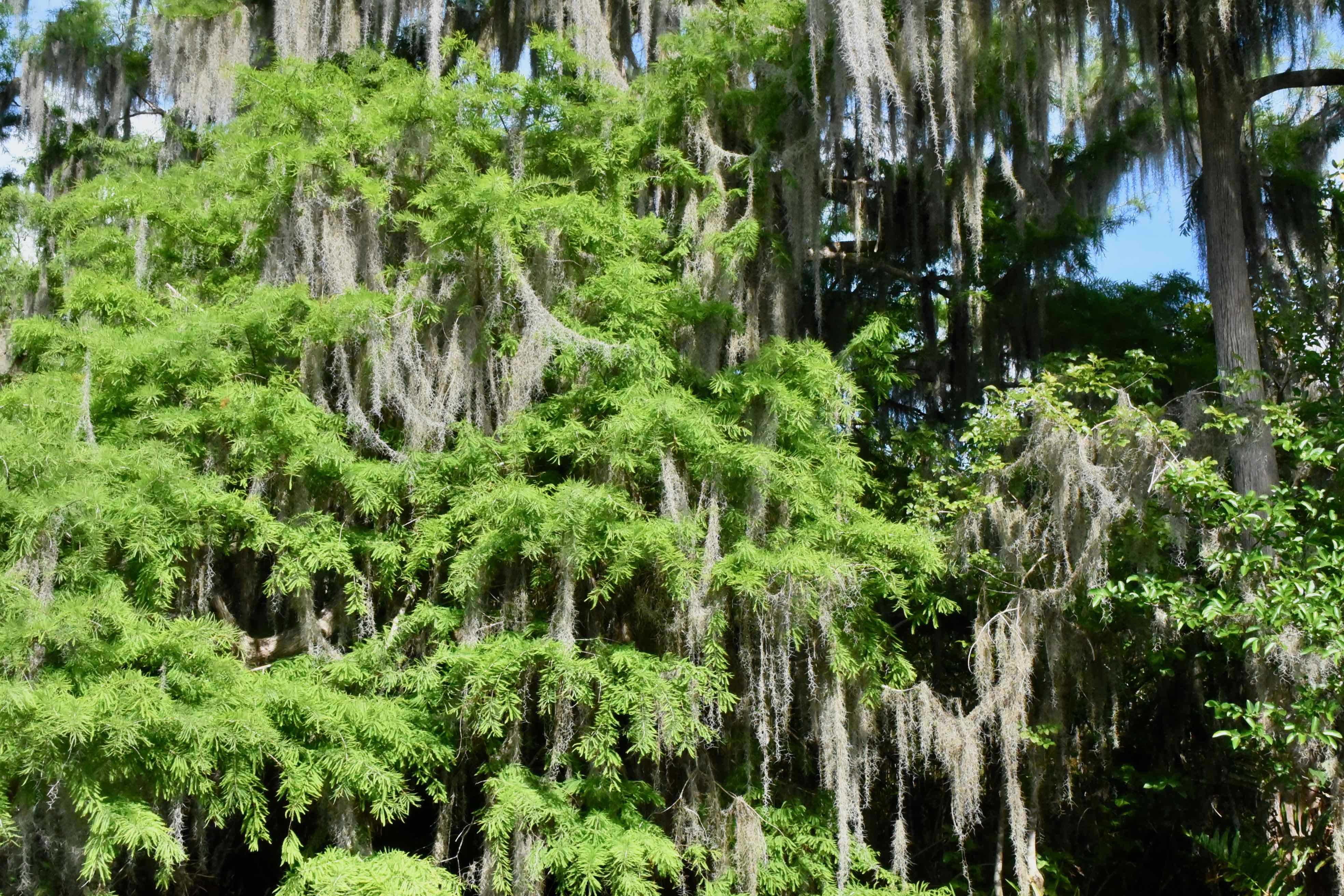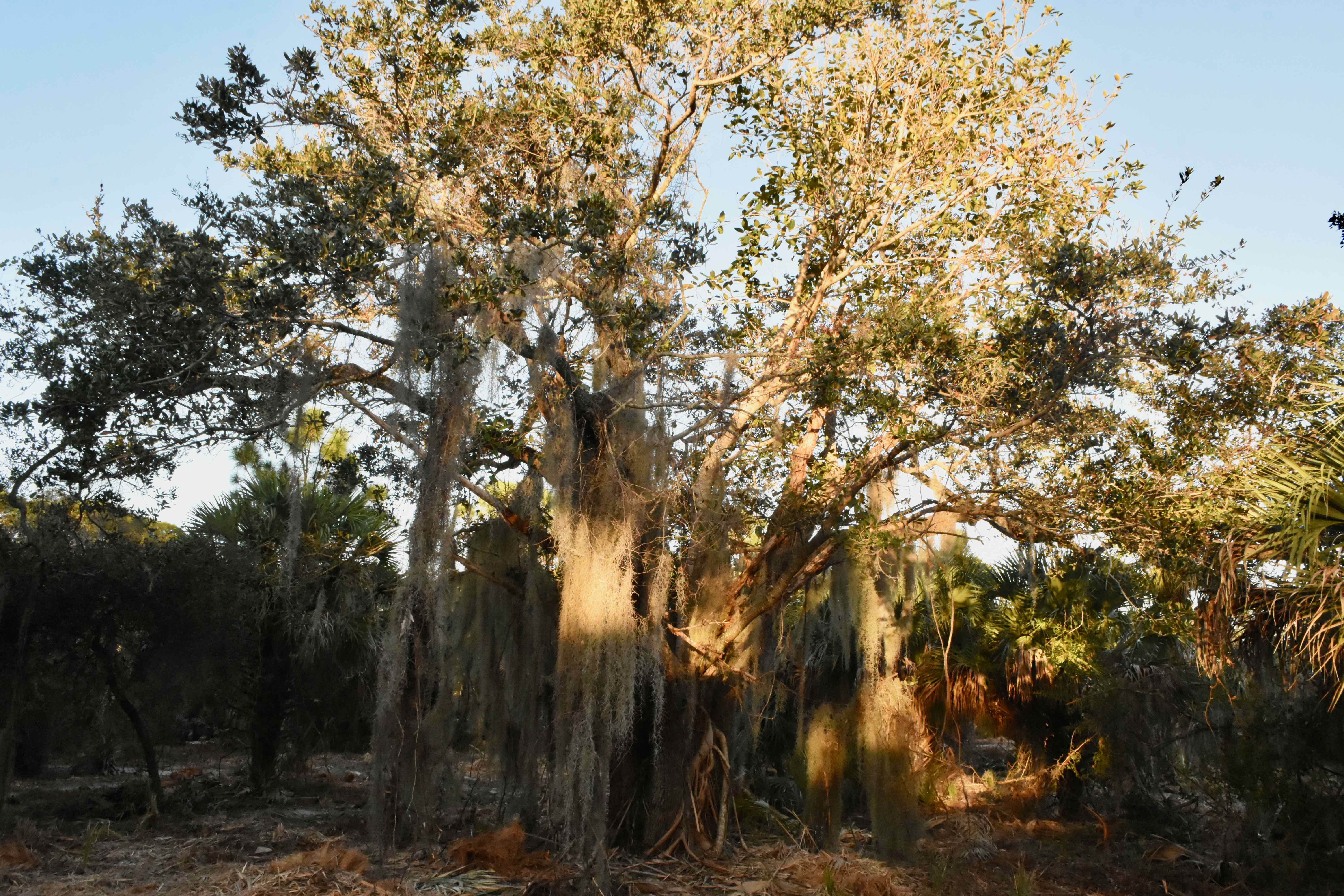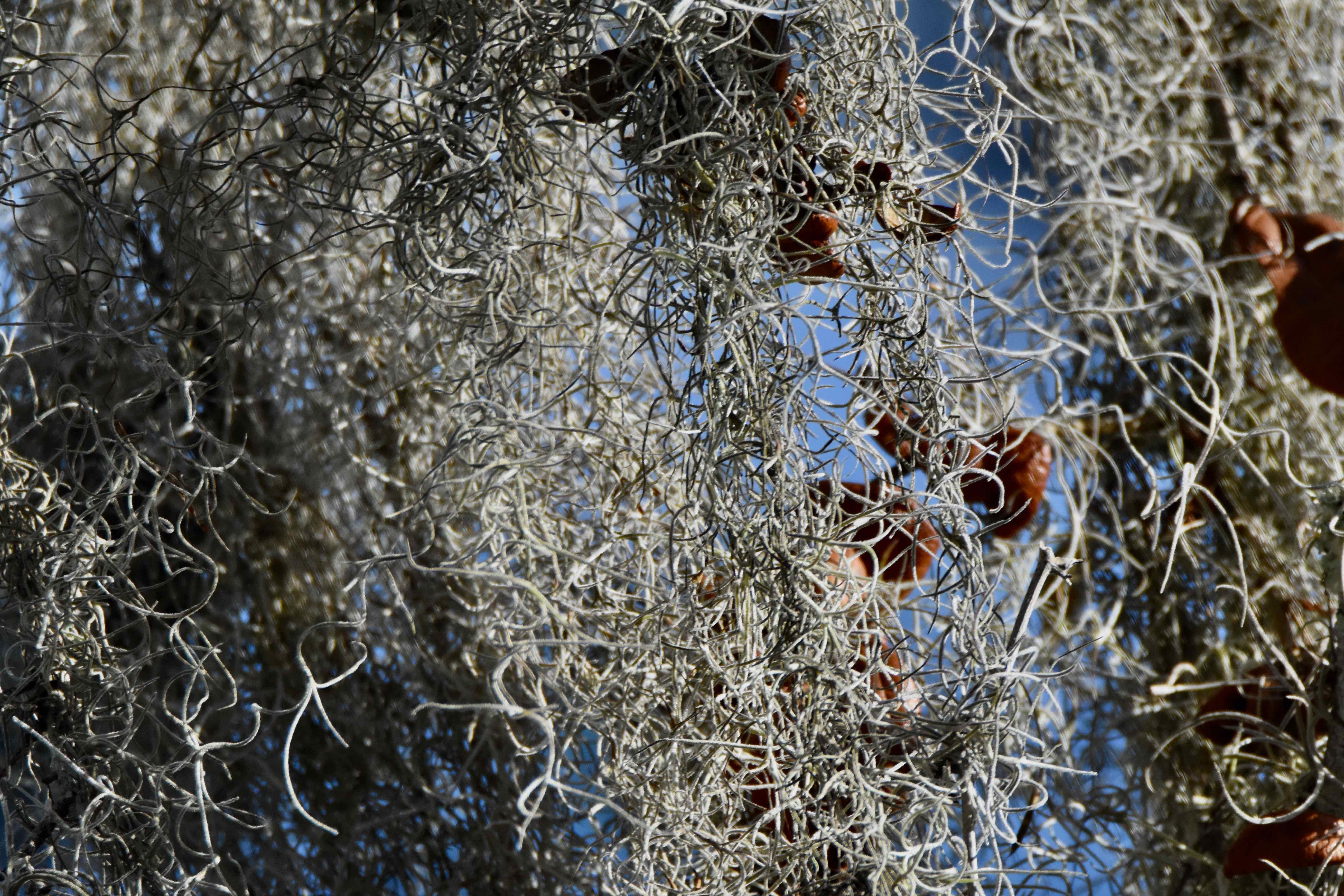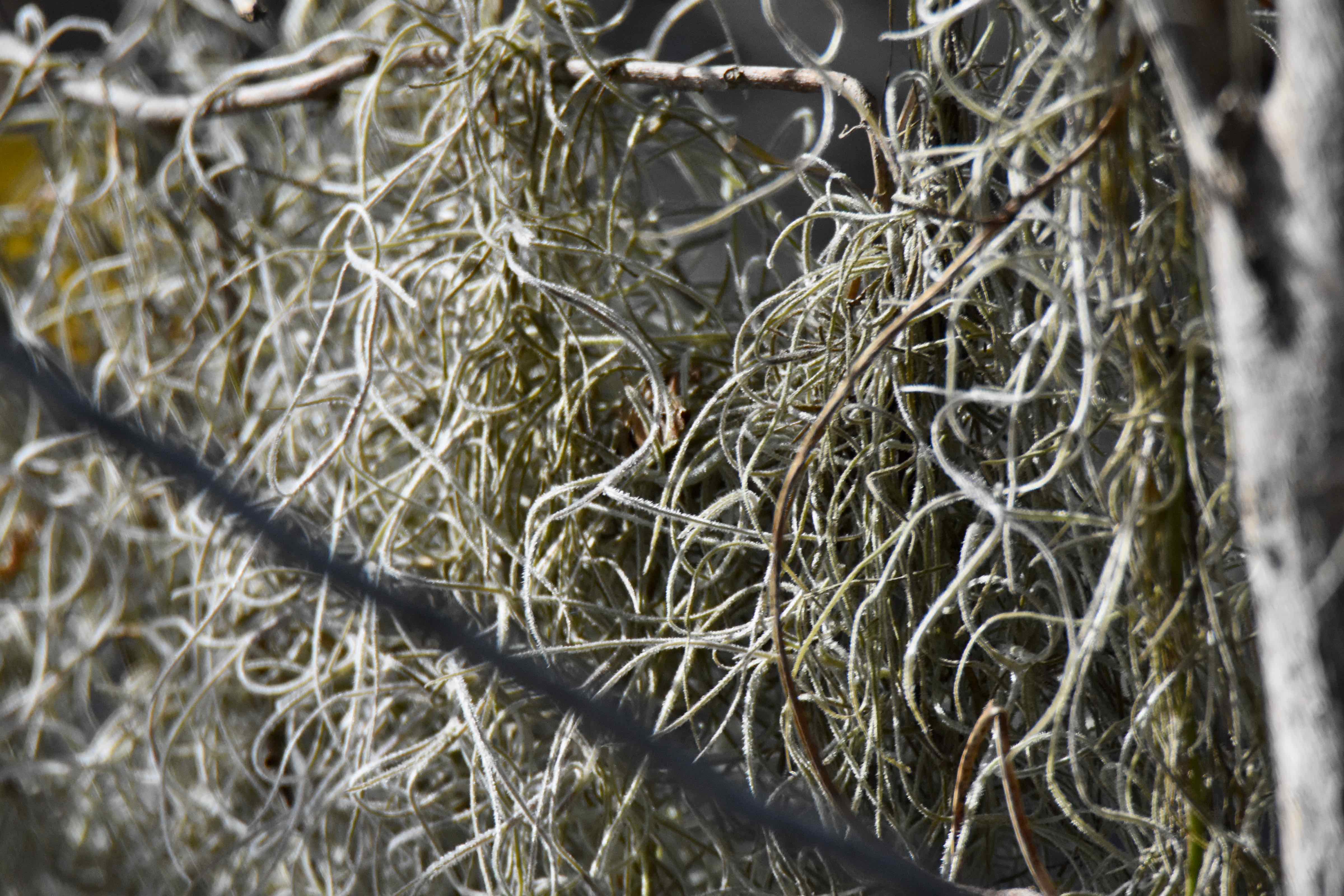
Spanish moss, photographed at Jonathan Dickinson State Park, Hobe Sound, Martin County, in April 2019.
Look closely at the Spanish moss, Tillandsia usneoides. What you see is a relative of the pineapple. Yes, this iconic plant of the South is related to the pineapple. It's even edible, although not nearly as tasty as its cousin.
Spanish Moss is one of 16 bromeliads native to Florida, and among the most common. It's found in all of Florida's 67 counties. It grows as far north as Maryland, Delaware and Virginia and as far west as Texas. It's also native to the Caribbean, Mexico, Central America and South America to central Argentina and Chile. It loves wet, humid places, hammocks, swamps and moist forests, but it is a tough plant, able to tolerate drought and temperature extremes.
It is an epiphyte, an air plant. It is not a moss and not a parasite. It gets moisture and nutrition through the air — gray scales line the stems and leaves and help Spanish moss collect what it needs without stealing anything. The only way it might harm its host is if it becomes so profuse that it blocks sunlight from getting to the leaves. And yes, it bears flowers, spring through fall, but they're hardly large enough to be noticed, unless you happen to be a bee or another pollinator. The flowers have three petals and are greenish or blue and produce small, hairy seeds designed to be dispersed by the wind and latch on to the bark of a tree. It is multibranched and can reach 30 feet in length. It also has no roots.
It's similar in its looks to a group of lichens called old man's beards, members of the genus Usnea. The resemblance is so close that the great Swedish botanist, Karl Linnaeus, creator of the binomial naming system that scientists use to identify species, gave Spanish moss the name T usneoides, meaning "of usnea." The two are fairly easy to tell apart — old man's beard lichens tend to look more "disheveled" than Spanish moss, and is somewhat elastic, while Spanish moss is more brittle: pull it and it will break easily.
Spanish moss is an extremely useful plant. Native Americans, including the Natchez, Houma and Seminole, would gather Spanish moss, soak it for six weeks to remove its outer coating and reveal black, curly inner fibers that they would weave into cloth for bedding, floor mats and horse blankets. It also would be twisted together to make cord tough enough to lash poles together for the framing of a house. In various forms, Spanish moss would be used as a kitchen tool to remove scum from boiling food, to make fire arrows and as a binder mixed with clay to coat the interior walls of a home just as horse hair was once used to make plaster walls. Europeans used it as fodder for their livestock, but it has little nutritional value.
It's been used to stuff furniture, not always successfully. Henry Ford tried Spanish moss to pad the seats of his Model T. Unfortunately, the moss was full of chiggers which we're guessing took a bite out of sales. Spanish moss isn't prone to chiggers while on a tree, but it will collect them when stored on the ground, as Ford did (and Seminoles did not). Still, furniture makers in the U.S. and Europe used Spanish moss as padding well into the 1950s. In 1927, Louisiana exported 1,200 train car loads of the stuff. More than 10,000 tons of moss was processed in 1939.
The Houma made a tea of it for treating chills and fever, and there's been some research done on the plant's ability to reduce blood sugar in diabetics.
Humans aren't the only ones who find the stuff useful. Three bat species roost in Spanish moss; the northern parula warbler nests in Spanish moss. Other birds use it to make nests, while squirrels, owls, egrets and others use it as bedding. One spider lives exclusively in Spanish moss.
Spanish moss is a member of Bromeliaceae, the pineapple family. Other names: graybeard, long moss, air-plant, Florida moss, con rape moss, wool crape, old man’s beard and grandfather’s whiskers.
Click on photo for larger image
Links for Spanish Moss



